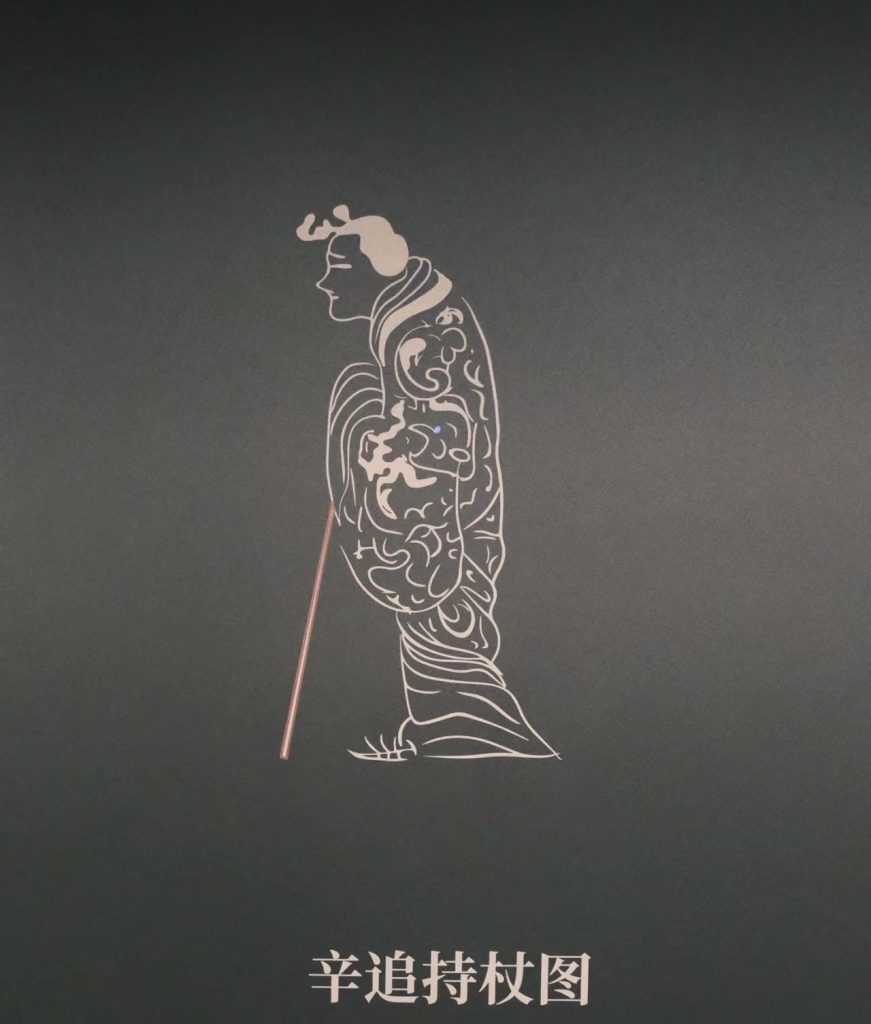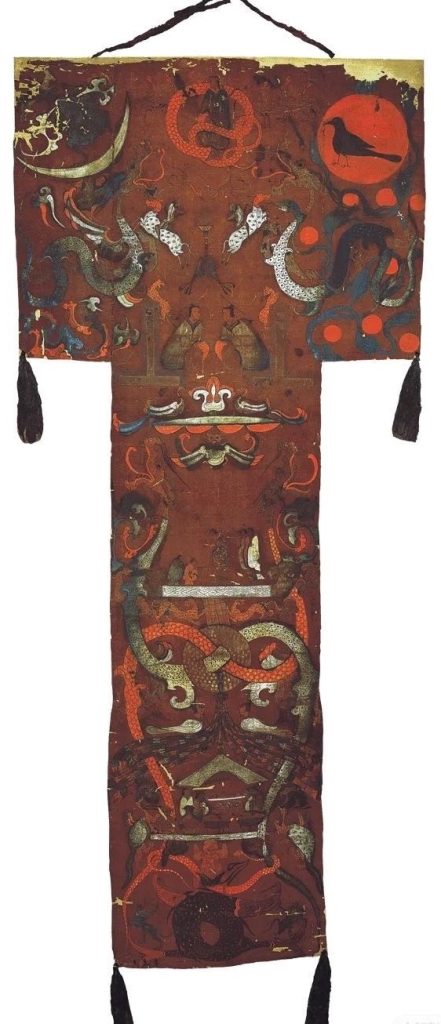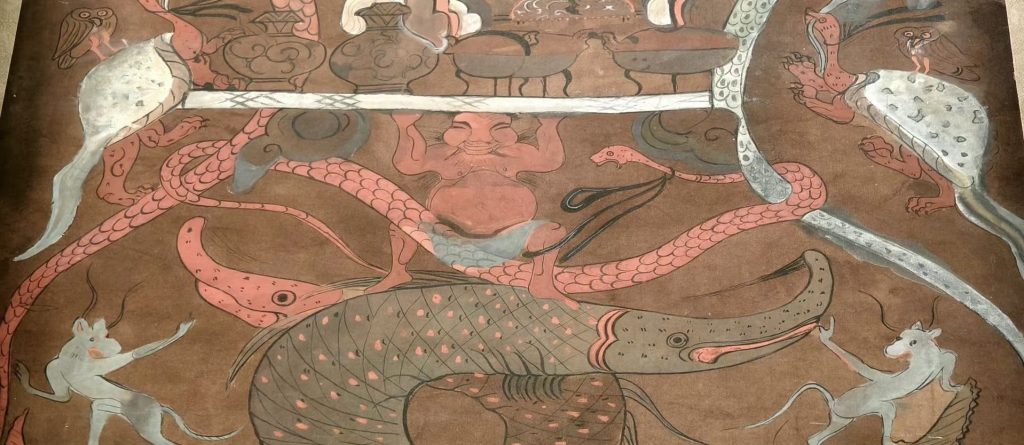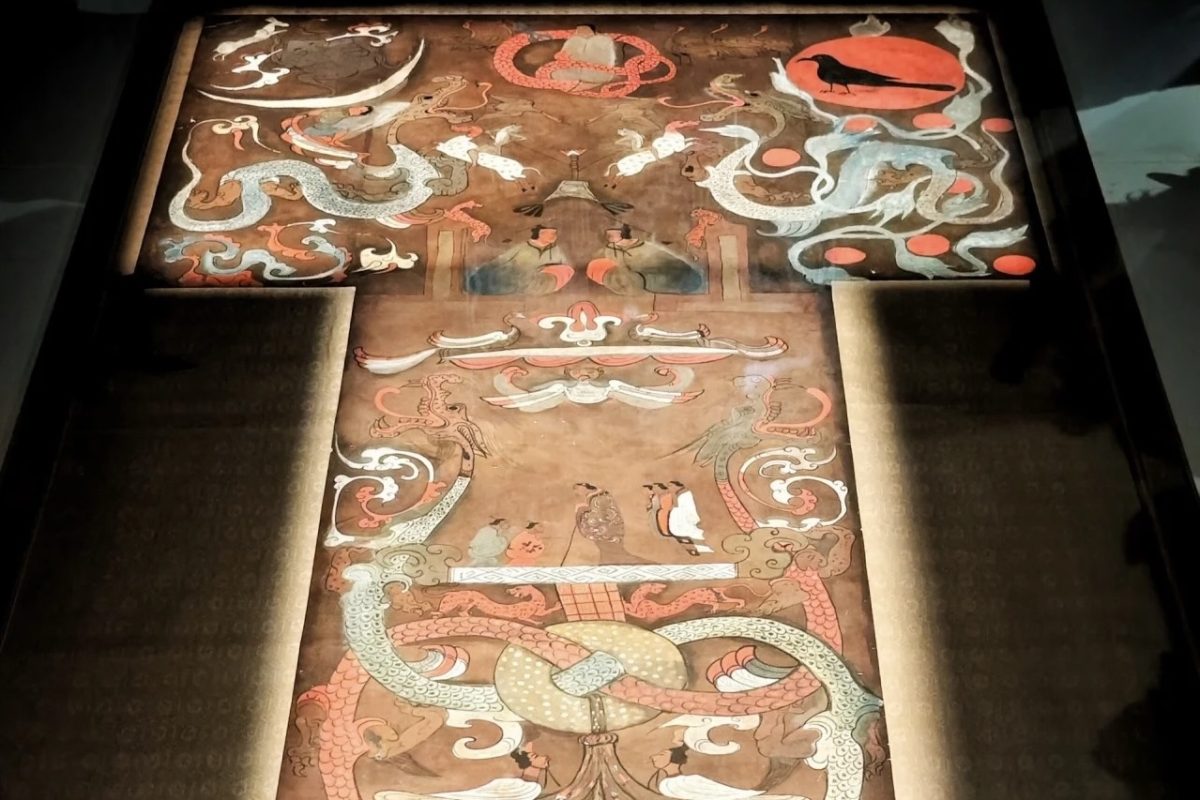Mawangdui Han Tomb [Tomb of the Western Han Dynasty (202-8 B.C)] unearthed in Changsha, Hunan Province in 1972. Mawangdui Han Tomb is one of the Chinese cultural relics not allowed to leave the country for exhibition. It is now in the Hunan Provincial Museum and is one of the treasures of the Hunan Provincial Museum.

Introduction to the painting
There are three tombs in the Mawangdui Han Tomb. Today we are mainly talking about Tomb One. Tomb One is the tomb of Madam XinZhui(a Chinese noblewoman. She was the wife of Li Cang.(the Chancellor of the Changsha kingdom, during the western Han Dynasty of ancient China) And this painting is on the inner coffin of Madam XinZhui.

The painting is 92cm wide at the top, 47.7cm wide at the bottom, and
205cm long, in the shape of “ T”. It is divided into three sections from
top to bottom: heaven, the human world and underworld.

Heaven
Upper right corner: there is a sun with a golden crow (Chinese mythological bird capable of driving a sun chariot) surrounded by eight other suns (Chinese myth: there were once 10 suns in the sky that shone on the earth and brought drought to the earth, so in order to save the earth a man named HouYi shot the remaining nine suns with an arrow).
Upper left corner: a woman holding the moon rising slowly, which is
related to the story of Chang’e Running to the Moon (Chinese legend: a woman named Chang’e, who ate an elixir of immortality and then ascended to become a god).
Right in the middle: in the middle of the sun and the moon, there sits a heavenly god with a human head and a snake’s body, surrounded by
cranes (a symbol of auspiciousness). This is to show that the god in the
sky takes care of Madam XinZhui.

The human world
Here is a profile of an old woman walking slowly on crutches, with two
people kneeling in front of her, followed by three attendants. Judging
from the dress, this should be the owner of the tomb, Madam XinZhui.

Underworld
A naked man (someone thinks he is the earth god Gun) was holding a white flat object symbolizing the earth, with two huge fishes “Ao” under his feet. Legend has it that god Gun is the only one who can stabilize the fish “Ao”.

Cosmology in the Han Dynasty
According to historical records, the T-shaped painting is called “Fei Yi”. The so-called “Fei Yi” has two meanings: one is like clothing but not clothing. A special person held it in front of the funeral procession and used to lead the soul to heaven; the second is that “非 Fei” equals “飞 Fei”, so “Fei Yi” also means that the deceased can fly up to heaven by wearing the Fei Yi. No matter what the interpretation is, the purpose is to fly into the heavenly realm.
The threefold division of heaven, the human world and underworld in this silk painting also reflects the cosmology of the people during the HanDynasty. They observed the sun rising in the east and setting in the west, the four seasons of spring, summer, autumn and winter, and so on, so they also believed that the universe ran in cycles. Since the universe runs in cycles, human life should also run in cycles. That being the case, death was not the end of human life, but another continuation of life, and they hoped that their souls would be reborn in heaven.
